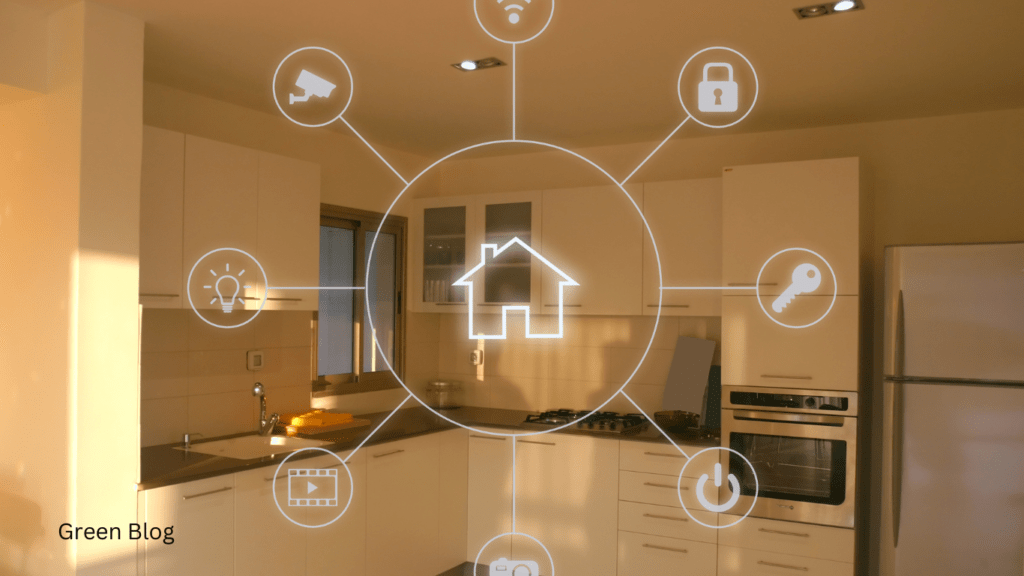Introduction
In today’s rapidly advancing technological landscape, AI-powered personal assistants have become an integral part of our daily routines. Whether it’s Siri helping us set reminders, Alexa controlling our smart home devices, or Google Assistant providing instant answers, these digital aides are transforming how we live and work. AI-powered personal assistants utilize artificial intelligence, machine learning, and natural language processing to understand and respond to user commands, making our lives more efficient and connected. This article explores the profound impact of AI-powered personal assistants on various aspects of daily life, from enhancing productivity to revolutionizing healthcare, while also addressing privacy concerns and future innovations.
II. Evolution of AI-Powered Personal Assistants
Early Developments
The journey of AI-powered personal assistants began with simple rule-based systems designed to perform specific tasks. One of the earliest examples is the chatbot ELIZA, developed in the 1960s by Joseph Weizenbaum, which mimicked human conversation using pattern matching techniques. Over the years, advancements in computing power and AI research paved the way for more sophisticated systems. By the early 2000s, virtual assistants like Microsoft’s Clippy provided rudimentary assistance within software applications, marking the beginning of more interactive AI helpers.
Technological Advances
Significant advancements in machine learning and natural language processing (NLP) have been pivotal in the evolution of AI-powered personal assistants. Machine learning algorithms enable these systems to learn from vast amounts of data, improving their accuracy and functionality over time. NLP, a subfield of AI focused on the interaction between computers and humans through natural language, has allowed these assistants to understand and respond to complex queries. Key milestones include the development of deep learning techniques and the creation of large-scale neural networks, which have dramatically enhanced the capabilities of AI assistants.
Current State
Today, AI-powered personal assistants are more advanced and widely adopted than ever before. Popular examples include Apple’s Siri, Amazon’s Alexa, Google Assistant, and Microsoft’s Cortana. These assistants can perform a wide range of tasks, from setting reminders and sending messages to controlling smart home devices and providing personalized recommendations. The integration of these assistants into smartphones, smart speakers, and other devices has made them an indispensable part of modern life (Climate Columbia) (Our World in Data) (Climate Columbia).
III. Enhancing Personal Productivity
Task Management
AI-powered personal assistants excel at managing tasks, helping users stay organized and productive. They can schedule appointments, set reminders, and create to-do lists. By using voice commands, users can quickly add tasks and receive timely reminders, ensuring nothing slips through the cracks. Assistants like Siri and Google Assistant can also sync with calendar apps, providing a seamless way to manage daily schedules.
Email and Communication
Managing emails and facilitating communication is another area where AI assistants shine. They can read out emails, draft responses, and even filter out spam, saving users valuable time. Assistants like Microsoft Cortana can integrate with email clients, helping users manage their inbox more efficiently. Additionally, AI assistants can set up meetings, send messages, and make phone calls, streamlining communication processes.

Information Retrieval
One of the most convenient features of AI-powered personal assistants is their ability to retrieve information quickly. Whether it’s answering a trivia question, providing weather updates, or offering restaurant recommendations, these assistants can access a vast amount of information and deliver it within seconds. This capability is powered by advanced search algorithms and extensive databases, making it easy for users to get the information they need without having to sift through numerous sources (Our World in Data) (Climate Columbia) (Our World in Data).
IV. Transforming Home Automation
Smart Home Integration
AI-powered personal assistants have become the central hub for smart home integration, allowing users to control various devices with voice commands. They can connect to smart thermostats, lights, security systems, and more, providing a unified platform for managing home automation. For example, users can adjust the thermostat, turn off lights, or lock doors using simple voice commands, enhancing convenience and energy efficiency.

Voice-Activated Controls
The ease of use provided by voice-activated controls is one of the most significant advantages of AI assistants in home automation. Users can interact with their smart home devices without the need for physical interfaces, making it accessible for people of all ages and abilities. This hands-free control is particularly beneficial for individuals with mobility issues, allowing them to manage their home environment effortlessly.
Energy Efficiency
AI-powered personal assistants contribute to energy efficiency by optimizing the use of home appliances and systems. They can adjust heating and cooling settings based on user preferences and occupancy patterns, reducing energy consumption and lowering utility bills. Additionally, smart home devices connected to AI assistants can monitor energy usage and provide insights, helping users make more informed decisions about their energy consumption (Climate Columbia) (Our World in Data) (MDPI).
V. Revolutionizing Healthcare
Health Monitoring
AI-powered personal assistants are making significant strides in healthcare, particularly in health monitoring. They can track health metrics such as heart rate, sleep patterns, and physical activity, providing users with valuable insights into their health. Devices like smartwatches and fitness trackers often sync with AI assistants to deliver real-time health data and personalized recommendations.
Virtual Health Assistants
Virtual health assistants are becoming increasingly common, offering medical information, symptom checking, and appointment booking. These AI-driven platforms can provide users with reliable health information and help them navigate their healthcare needs. For example, they can remind patients to take their medication, track symptoms, and even suggest when to seek medical attention based on their health data.
Mental Health Support
AI-powered apps and features are also supporting mental health by providing tools for stress management, mindfulness, and emotional well-being. Virtual assistants can guide users through meditation exercises, offer mood tracking, and provide coping strategies for anxiety and depression. By making mental health resources more accessible, AI assistants are playing a crucial role in promoting overall well-being (Our World in Data) (MDPI) (MDPI).
VI. Improving Accessibility
Support for Disabilities
AI-powered personal assistants are significantly enhancing accessibility for individuals with disabilities. Voice-activated controls allow users with visual impairments to interact with their devices and access information hands-free. Assistants like Alexa and Google Assistant can read out text, set reminders, and perform tasks that would otherwise require visual input. For individuals with hearing impairments, these assistants can provide real-time captions and convert spoken language into text, facilitating better communication (Climate Columbia) (Our World in Data).
Language Translation
One of the remarkable features of AI assistants is their ability to provide real-time language translation. This functionality breaks down language barriers, enabling users to communicate more effectively with people who speak different languages. Assistants like Google Assistant offer translation services that can convert spoken or written language in real-time, supporting both personal and professional interactions (Climate Columbia) (Our World in Data).
Elderly Assistance
AI assistants are also proving to be valuable companions for the elderly. They can help older adults manage daily tasks, such as setting medication reminders, scheduling appointments, and even providing companionship through interactive conversations. The ease of use and voice-activated commands make these assistants particularly beneficial for seniors who may have limited mobility or technical skills (MDPI) (MDPI).
VII. Impact on Education
Personalized Learning
AI-powered personal assistants are transforming education by providing personalized learning experiences. These assistants can tailor educational content to individual learning styles and paces, making learning more effective and engaging. For example, AI tutors can adapt lessons based on a student’s progress, offering additional resources or challenges as needed. This personalized approach helps students grasp concepts more thoroughly and retain information longer (Our World in Data) (Climate Columbia).
Administrative Support
In educational settings, AI assistants help streamline administrative tasks for educators. They can assist with grading, scheduling, and communication, reducing the administrative burden on teachers and allowing them to focus more on instruction. AI-powered systems can also track student attendance, performance, and engagement, providing valuable insights to educators and administrators (Our World in Data) (MDPI).
Student Engagement
AI assistants enhance student engagement through interactive and adaptive learning tools. They can facilitate virtual classrooms, provide instant feedback on assignments, and encourage collaboration among students. Gamification elements, such as quizzes and interactive exercises, make learning more fun and engaging, helping students stay motivated and interested in their studies (Climate Columbia) (Our World in Data).
VIII. Privacy and Security Concerns
Data Privacy
The widespread use of AI-powered personal assistants raises significant data privacy concerns. These assistants collect and process vast amounts of personal data, including voice recordings, location information, and usage patterns. Ensuring this data is stored securely and used ethically is crucial. Companies need to implement robust data protection measures and provide transparency about data collection and usage practices to build and maintain user trust (Our World in Data) (MDPI).
Security Risks
AI assistants can be vulnerable to security breaches, which can compromise user data and privacy. Potential risks include unauthorized access to devices, exploitation of vulnerabilities, and data interception. Users should be aware of these risks and take steps to protect their devices, such as enabling two-factor authentication, regularly updating software, and using strong passwords. Manufacturers also have a responsibility to continuously improve security measures and address any vulnerabilities promptly (MDPI) (MDPI).
Ethical Considerations
The ethical implications of AI assistants in personal and private spaces are a topic of ongoing debate. Issues such as surveillance, bias in AI algorithms, and the potential for misuse of personal data are critical considerations. Ensuring that AI systems are developed and deployed ethically requires collaboration between developers, policymakers, and users. Establishing clear guidelines and ethical standards can help mitigate potential negative impacts and promote responsible use of AI technology (Climate Columbia) (Our World in Data) (MDPI).
IX. Future Prospects and Innovations
Emerging Technologies
The future of AI-powered personal assistants is promising, with several emerging technologies poised to enhance their capabilities further. Advances in natural language understanding, emotion detection, and contextual awareness will enable these assistants to provide even more personalized and intuitive support. Integration with augmented reality (AR) and virtual reality (VR) technologies could also open new possibilities for immersive and interactive experiences (Our World in Data) (Climate Columbia).
Integration with Emerging Trends
AI assistants are expected to play a crucial role in the evolving landscape of the Internet of Things (IoT) and 5G networks. As more devices become interconnected, AI assistants will act as central hubs, managing and coordinating various smart devices seamlessly. The low latency and high-speed connectivity offered by 5G will enhance the responsiveness and capabilities of AI assistants, making them more efficient and effective in real-time applications (Climate Columbia) (Our World in Data).
Potential Challenges
Despite their potential, AI-powered personal assistants face several challenges that need to be addressed. These include improving accuracy and reliability, ensuring data security and privacy, and addressing ethical concerns. Additionally, there is a need to make these technologies more accessible and affordable to a broader audience. Ongoing research and development, along with collaboration between stakeholders, will be essential in overcoming these challenges and realizing the full potential of AI assistants (Our World in Data) (MDPI) (MDPI).
X. Conclusion
AI-powered personal assistants have become an integral part of modern life, transforming how we manage tasks, interact with our homes, and access healthcare and education. While these technologies offer numerous benefits, it is essential to address privacy, security, and ethical concerns to ensure their responsible use. As we look to the future, continued innovation and collaboration will be key to unlocking the full potential of AI assistants, making our lives more connected, efficient, and sustainable. Staying informed and engaged with developments in AI technology will empower us to harness its benefits while mitigating its risks.